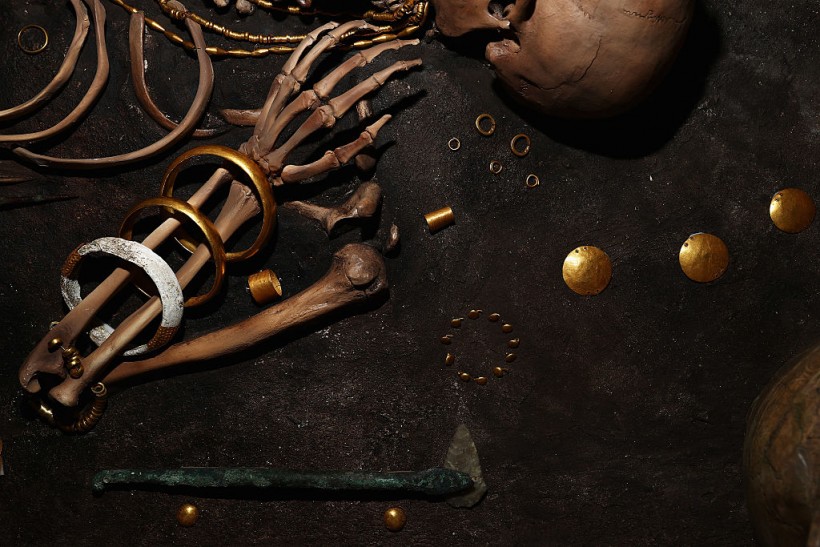Archaeologists have discovered a 4,000-year-old goldsmith's toolkit from a group of polished stones in a burial mound near Stonehenge from more than 200 years ago, according to a report by The Guardian.
Axes and shaped cobbles discovered in the grave have undergone microscopic inspection, revealing minute traces of gold and wear patterns that indicate a craftsperson used them to pound and smooth gold.

DORDRECHT, NETHERLANDS - NOVEMBER 24: A recreation of the skeleton discovered in Grave No. 43 in the Varna Chalcolithic Necropolis together with the numerous gold artefacts dating to the 4560-4450 BC the oldest processed gold in the world, as displayed in the 'Humanity's First Gold' exhibition at Dordrechts Museum on November 24, 2016 in Dordrecht, Netherlands.
Bronze Age Gold
The bronze age burial mound was discovered in Wiltshire in 1802 and garnered attention for its large collection of pierced animal bones, which could is believed to be the costume of a shaman.
Oliver Harris, an associate professor of archaeology at the University of Leicester, claimed that researchers hadn't paid nearly as much attention to the other burial items, such as a copper alloy awl, flint cups, and two broken battle axes.
He notes that these new finds now have fresh stories to tell that weren't previously known because of the lack of advanced technologies.
Five of the stone tools had gold traces that were found through microscopic analysis. The gold's composition was found to be similar to that of known bronze-era gold.
The valuable metal had been flattened and polished, as evidenced by the examination of minute rubs and scratches.
The tools, according to the archaeologists, may have been employed by the goldsmith to create priceless artifacts that included jet, amber, or wood pieces that were plated in thin sheets of gold.
They speculate that the awl may have carved patterns and perforations while the flint cups may have been used to combine adhesives and resins.
Wessex Civilization
According to Harris, the grave items are believed to be from between 1850 and 1700 BC and are related to the Wessex civilization, which grew in prominence following the construction of Stonehenge.
He noted that even though there were no bone fragments recorded, the goldworker is particularly interesting.
"The way they dress, they have materials that are thousands of years old - they're going to be someone who stands out. This is a person who dresses very differently from some of their compatriots and can do amazing things. They're definitely different and special," Harris said in a statement.
It's interesting to note that the goldworker's grave goods contained four Neolithic axes, which were several thousand years old when they were buried with him. Analysis revealed that one of the axes had been used to produce bronze-age gold.
The full findings were published in the journal Antiquity.
Related Article: Archaeologists May Have Discovered the Earliest Known Narrative Scene Carved in an 11,000-year-old Neolithic Bench









